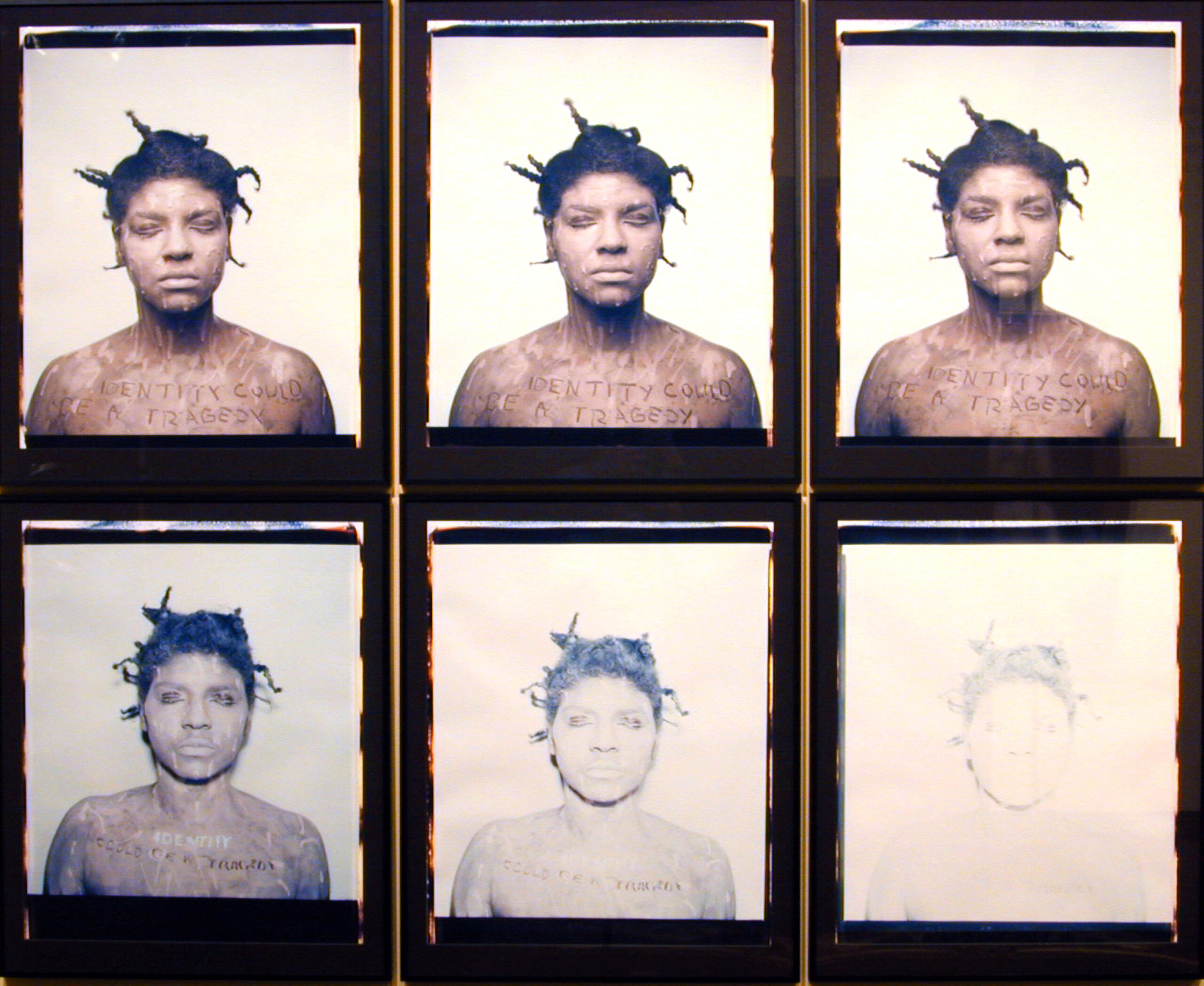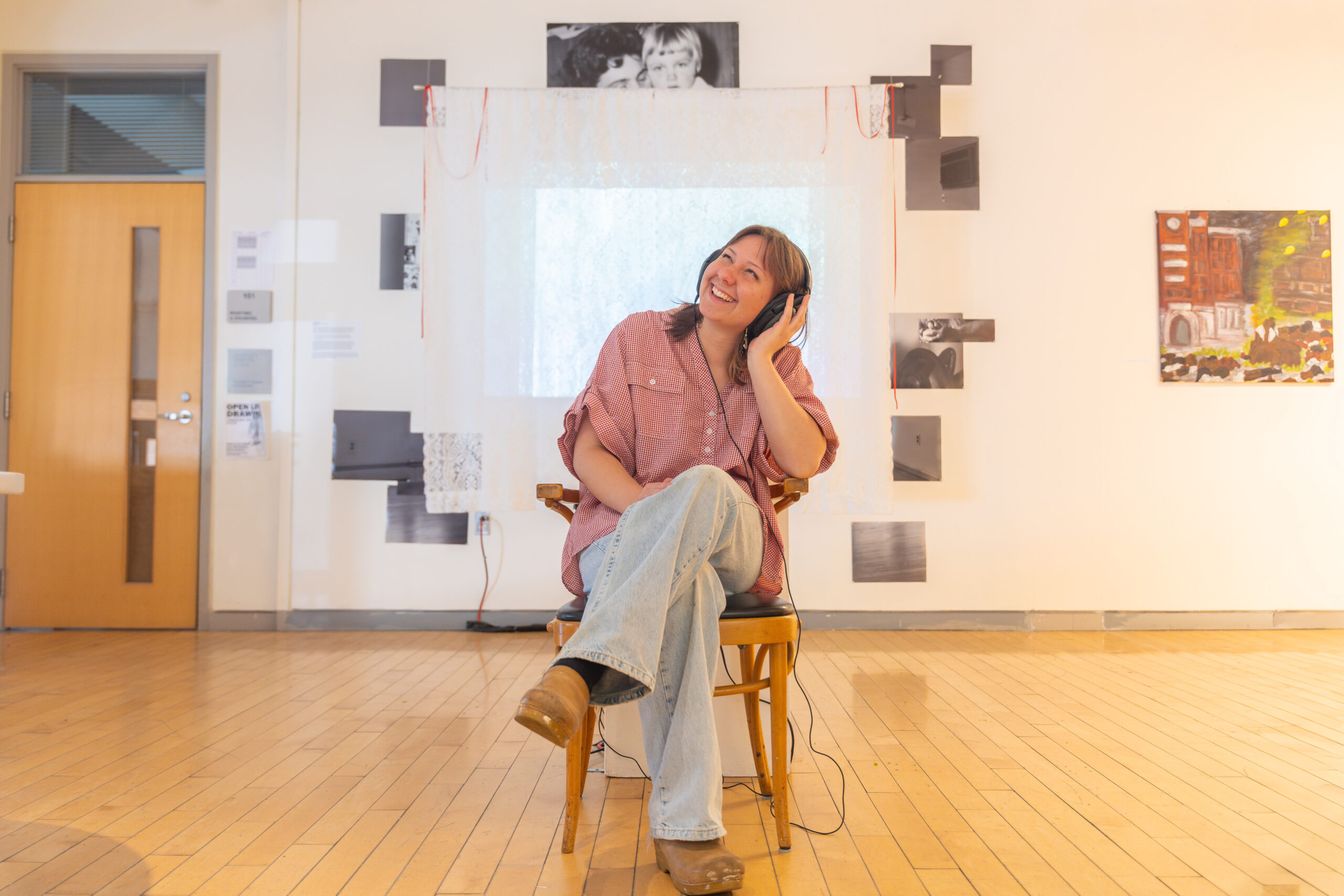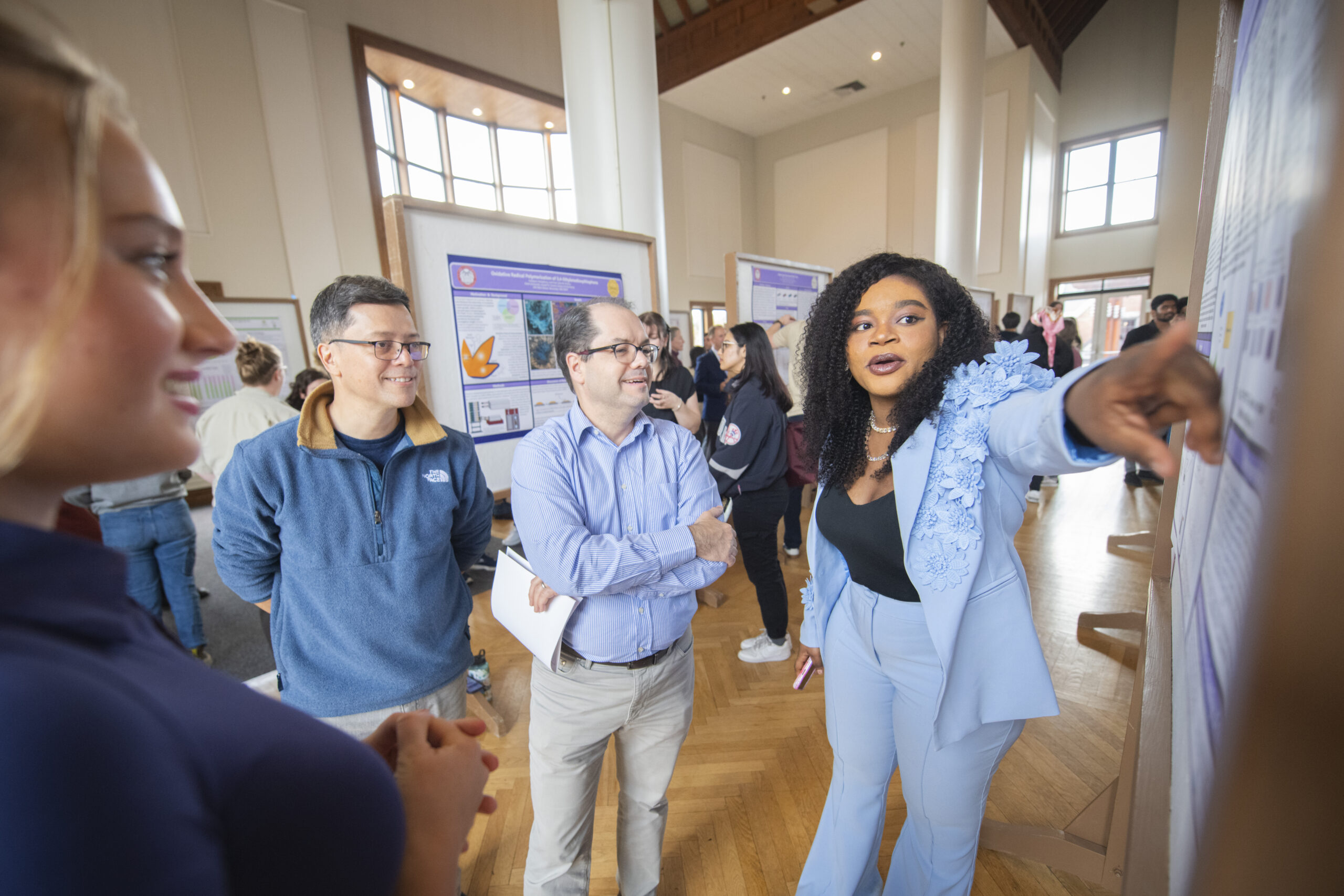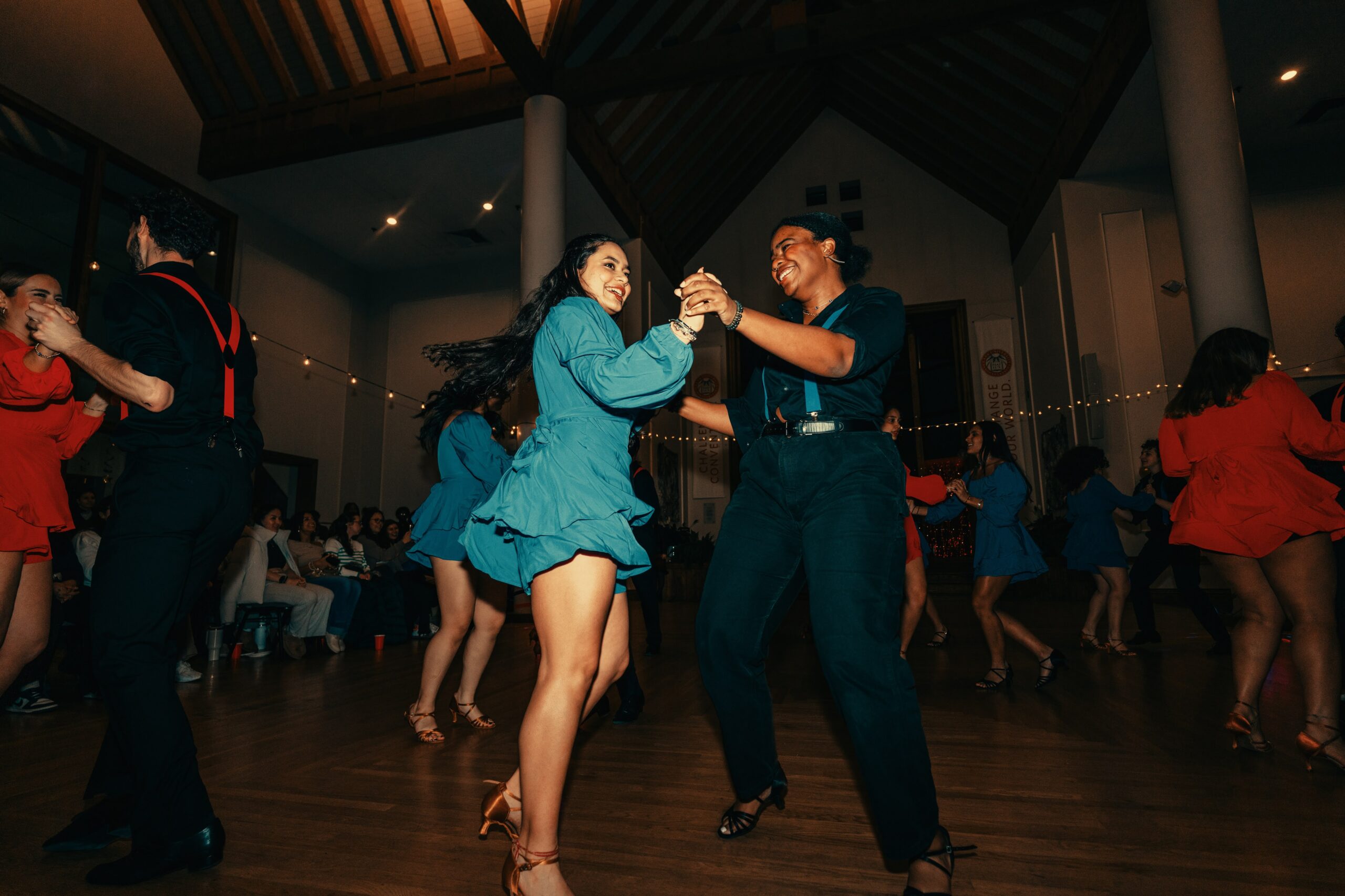Studio art students display their original works
María Magdalena Campos-Pons, When I am Not Here/ Estoy Allá, Identity Could Be a Tragedy, 1995-1996. Image courtesy of the artist.
An exhibition opening next month at the Worcester Art Museum is an opportunity for visitors to experience an expansive view of identity, says Toby Sisson, Clark University associate professor and program director of studio art, also a co-curator of the exhibition.
When Sisson was planning course content for Contemporary Directions in spring 2021, she was asked by Nancy Burns, the Stoddard associate curator of prints, drawings, and photographs at the Worcester Art Museum, about co-curating an exhibition exploring race and ethnicity that focuses on the visual strategies used by diverse artists.
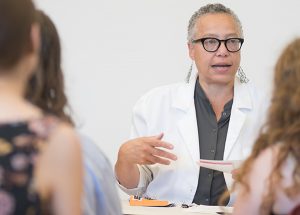
Together, Sisson and Burns developed the course and accompanying exhibition, and now the museum is ready to unveil “Us Them We | Race Ethnicity Identity,” which explores how contemporary artists since the mid-1970s have used formal artistic devices like text, juxtaposition, pattern, and seriality to explore socio-political concepts in their work.
“Given that the early exhibition planning was taking place during the rapid rise in awareness of BLM, after the murder of George Floyd, and students were organizing ‘Day of Refusal’ and ‘Abolition May’ protests on campus last year, the work we’re doing around race, ethnicity, and identity is especially timely and important,” says Sisson.
The exhibition opens Feb. 19 and runs through Juneteenth on June 19. It includes works from dozens of artists, drawn from the museum’s collection and several significant loans. Featured are photography, prints, painting, and sculpture, including major works by Edgar Heap of Birds / Hock E Aye Vi, Byron Kim, Roberto Lugo, Shirin Neshat, Lorna Simpson, and others.
“With this exhibition we hope to generate a new conversation about how identity can be revealed through form itself. An artist’s decision to use certain visual motifs like repetition, movement, language, and contrast can serve to emphasize larger concepts about race and ethnicity,” says Burns. “There’s truth to the idea that ‘The medium is the message.’ Art allows us to receive certain messages. However, too often, big ideas like those of political protest allow viewers to bypass a rigorous critique of a work’s individual elements.”
Students were tasked with selecting two works in the exhibition that resonated with them, then creating artwork inspired by those pieces.
“Interestingly, several objects were chosen by multiple students although what they created in response was quite distinct in form, content, and medium,” says Sisson.
One important element of the project was allowing students to examine their own identity in relation to the artist and work they selected.
“We spent considerable time exploring multiple aspects of identity and students were encouraged to express various parts of themselves in their own work (e.g., race, gender, religion, sexual orientation, ethnicity, nationality, socioeconomic status, language, ability, age, religious commitment, or political perspective). The recognition of how an artist’s identity is manifest in their work and how the lived experience of historically marginalized groups can, in fact, be every bit as universal as those of the dominant culture was an important focus of the course,” says Sisson.
Daniel Macura ’21 says the Contemporary Directions course allowed each student to learn and reflect upon their own identity in an inclusive atmosphere.
“The variety of underrepresented artists enriched the curriculum because of their intersectionality within cultures. Creating work for this exhibition allowed me to reflect on my own background, heritage, and identity by responding to Osamu James Nakagawa’s ‘Rain,’ ” says Macura, who majored in media, culture, and the arts.
Sisson will be teaching Contemporary Directions again this semester and her students will engage with public programming to align with the run of the show. They will also create their own artwork for display in the Traina Center this spring.
“It’s also been great to build a course around this project for two semesters and provide students with a special opportunity to have their work shown in an important venue,” says Sisson.
The spring 2021 offering of Contemporary Directions was taught entirely online and included visits via Zoom from artists Nyeema Morgan and Layla Ali.
Clark and the Worcester Art Museum have a history of collaboration. Past partnerships have included “Women of WAM: Depictions of Femininity in Early Modern Europe,” curated and researched by students in Professor John Garton’s Art, the Public, and Worcester’s Cultural Institutions course, “Rediscovering an American Community of Color: The Photographs of William Bullard, 1897-1917,” which was co-curated by students in Professor Janette Greenwood’s Public History: Race, Photography and Community seminar, and “Cyanotypes: Photography’s Blue Period,” with research from students in a seminar co-taught by Professor Kristina Wilson and Burns, of the art museum.


